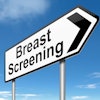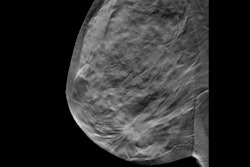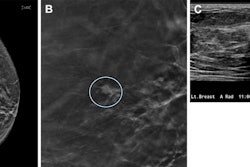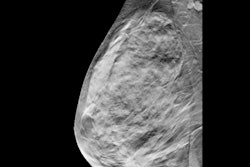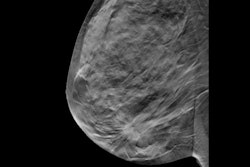Batch reading of digital breast tomosynthesis (DBT) exams can improve the reading performance of radiologists, according to research published November 12 in Radiology.
A team led by Craig Abbey, PhD, from the University of California, Santa Barbara found that radiologists achieved improved recall rates and interpretation times without change in sensitivity in batch reading screening DBT exams.
“False-positive rate and reading time are important in [DBT] screening performance assessment,” the Abbey team wrote. “This study demonstrates that both parameters change sequentially in batch reading, consistent with perceptual adaptation affecting radiologists.”
Previous studies suggest that imaging readers experience perceptual adaptation when interpreting batched screening mammograms. This refers to the ability to adjust and adapt to changes and eliminate distractions. The researchers noted that perceptual adaptation could serve as a mechanism for better reading performance for radiologists.
Abbey and colleagues analyzed clinical DBT breast cancer screening data to evaluate changes in reader performance during sequential batch reading.
The study consisted of 121,652 screening DBT exams obtained between 2018 and 2019, which included 1,081 cancers interpreted by 15 radiologists.
Unadjusted false-positive rates fell from an average of 15.5% at the first within-batch DBT exam to 10.5% after three sequentially read exams (p < 0.001). Meanwhile, sensitivity did not significantly change between the first exam and the sequentially read exams (82.6% vs. 84.2%; p = 0.15).
Also, the interpretation time consistently decreased. This included a significant reduction in longer batches from an average of 2.8 minutes to 2.2 minutes for noncancer exams (p < 0.001).
When the researchers adjusted for sampling bias and confounding factors like patient age, breast density, day of the week, and the time of day, false-positive rates fell from 11.5% to 9.4% after three exams (p < 0.001). Finally, the same trend went for interpretation time, which decreased from 3.2 minutes to 2.7 minutes for noncancer exams (p < 0.001).
The study authors highlighted that their results point to temporal processes like adaptation being considered and harnessed in DBT screening settings. They also called for more studies to “further refine understanding of adaptation and possibly inform clinical interpretive practice.”
In an accompanying editorial, Mami Iima, MD, PhD, and Hiroko Satake, MD, PhD, from Nagoya University in Japan wrote that while perceptual adaption could play a role in reading improvement, other factors like decision threshold calibration could also be a contributor.
They added that the findings by Abbey et al “highlight the complex interplay” between human perception, decision-making, and the breast cancer screening process.
“As breast imaging technology continues to evolve, understanding and optimizing the human element of screening remains crucial for maximizing its life-saving potential,” Iima and Satake wrote.
The full study can be accessed here.


